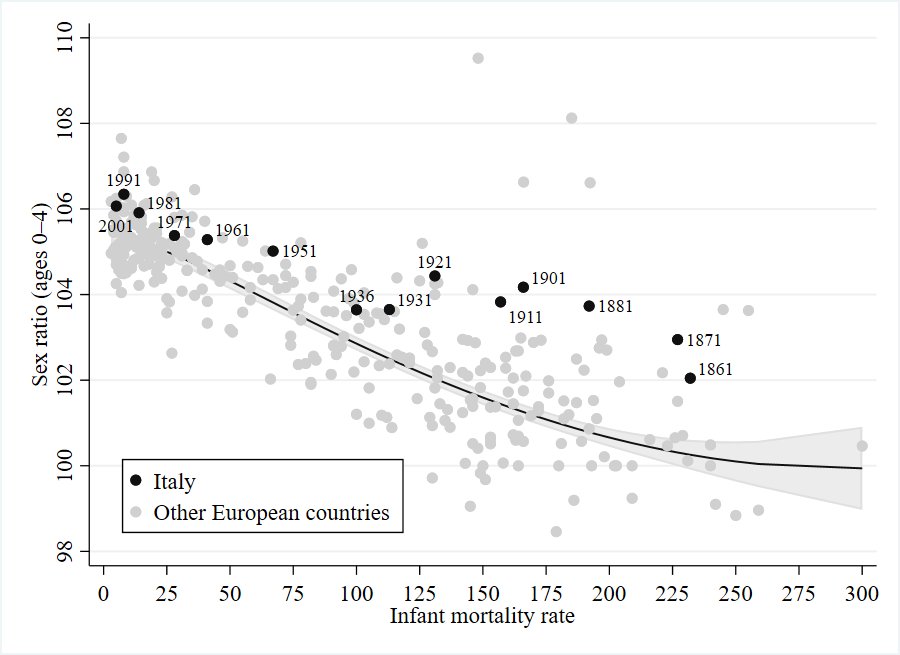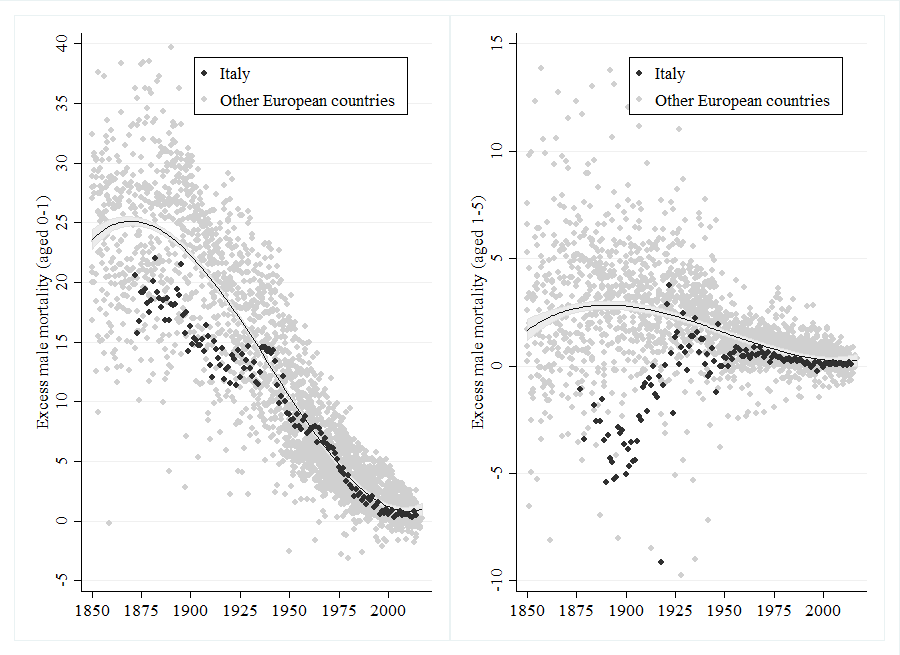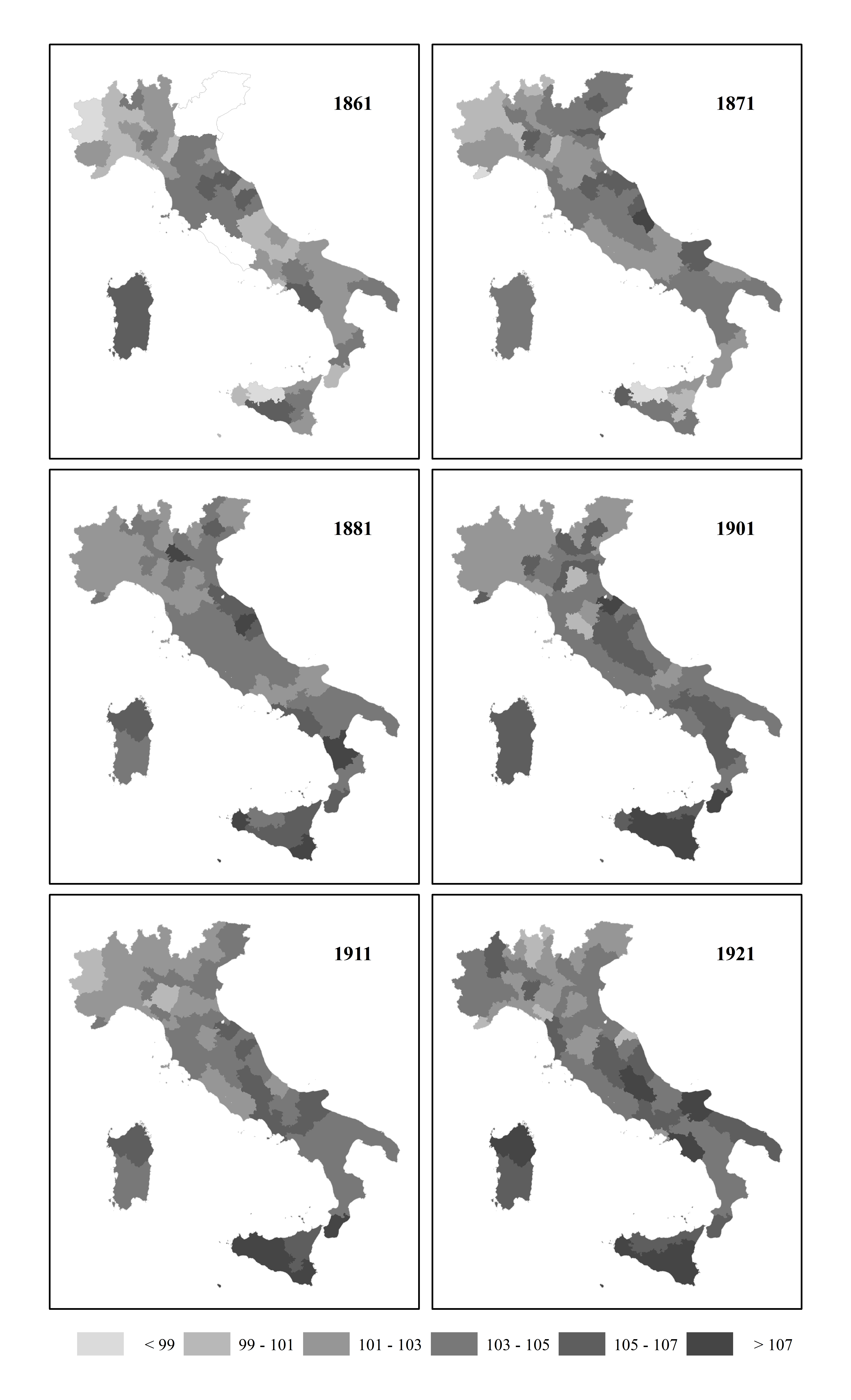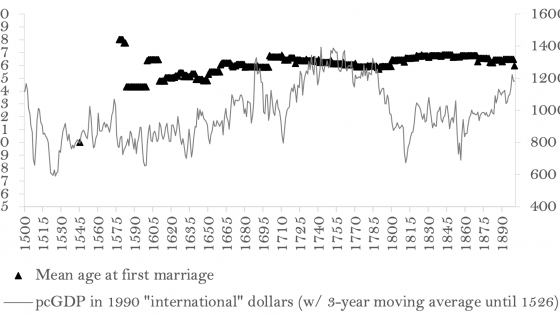While the social and economic status of women in Italy has improved in recent decades, Italy still has one of the lowest female labour-force participation rates in the OECD, and women’s work is poorly remunerated – especially compared to other countries in the EU (OECD 2017, Mancini 2018). Likewise, significant gender gaps are visible in managerial ranks and the political arena (Bozzano 2014). Though there are striking regional disparities – women’s relative status is particularly impaired in Southern Italy (Bozzano 2017) – there is very little evidence on the long-term evolution and regional disparities of women’s status in this country.
In a recent article (Beltrán Tapia and Cappelli 2023), we discuss the possibility that gender-discriminatory practices affected female mortality rates early in life in Liberal Italy (1861–1921). Female neglect tends to go hand in hand with a marked preference for sons, especially in agricultural societies. Evidence on these issues exists for specific areas and periods (e.g. Manfredini et al. 2016, Corsini 1991, Kertzer 1993, Pinelli and Mancini 1997), but a comprehensive, bird’s-eye view has not yet been provided. Relatedly, a recent line of research has reassessed the argument that no female neglect can be found in historical Europe (Lynch 2011), showing that there were in fact ‘missing girls’ in some regions within the continent (Beltrán Tapia and Szołtysek 2022). Greece stands out as an extreme case of female neglect, as more than 5% of girls went ‘missing’ between 1861 and 1920 (Beltrán Tapia and Raftakis 2022).
Relying on population censuses, this article stresses the existence of an excess of male children in Italy in the second half of the 19th century and the early 20th century. Child sex ratios – defined as the number of males per hundred females aged 0–4 – provide a cumulative measure of neonatal, infant, and child mortality, allowing us to detect patterns of female neglect. Figure 1 plots infant mortality rates and child sex ratios (ages 0–4) in 25 European countries between 1750 and 2001. The fitting line can be considered an estimation of what the child sex ratio should look like (according to the mortality environment) in the absence of gender-discriminatory practices inflating female mortality. Compared to that benchmark, the relative number of surviving boys reported in the Italian population censuses is much higher than expected, at least until 1921. These results are virtually the same if child sex ratios are computed using the age group 5–9, an age-group that is less prone to under-registration issues. Comparing the observed sex ratios with what would be expected according to the mortality environment suggests that around 2–3% of girls went missing in Italy during this period: these girls died due to neglect right after birth, abandonment, and/or due to differential treatment in terms of food and care during infancy and childhood.
Figure 1 Child sex ratios (ages 0–4) in Italy and Europe, 1750–2015
Note: The fitting line is estimated using a fractional polynomial, and represents the predicted sex ratio based on the prevalent infant mortality rates. Source: Beltrán Tapia, ‘Sex ratios’, and Mitchell, International.
Crucially, this excess female mortality is also visible using death statistics, which rules out the possibility that our results are driven by registration issues with the censuses: while female under-registration would bias child sex ratios upwards, it would also underestimate female mortality rates. Figure 2 shows excess male mortality (male deaths minus female deaths, both normalised to 1,000 live births) in Italy and Europe during both infancy (ages 0–1) and early childhood (ages 1–5) in the period 1850–2015. As expected, the gender gap in mortality tends to favour girls, especially during infancy but also during early childhood. In Italy, however, more girls (or less boys) were dying than would be expected before the 1920s – basically the same conclusion that arises from analysing child sex ratios.
Figure 2 Excess male mortality in Italy and Europe (age groups 0–1 and 1–5), 1850–2015
Note: Excess male mortality is computed as the difference between male and female mortality rates (per 1,000 live births). The fitting line is estimated using a fractional polynomial.
Source: Human Mortality Database (HMD).
In order to go beyond national averages, Figure 3 depicts the relative number of boys and girls (ages 0–4) in Italian provinces between 1861 and 1921. These maps show that the geography of child sex ratios also evolved over time. While an excess of male children could be found across Italy (regardless of latitude) in the earlier censuses, the South seems to concentrate the highest child sex ratios in the early 20th century. This geographical evolution resembles that of gender inequality in literacy rates: although differences in male and female literacy were higher in the North at the end of the Napoleonic War, this gap declined dramatically over the course of the 19th century, a pattern that was followed in the rest of the country only later on. Reassuringly, analysing infant and child mortality rates at the province level yields the same conclusion.
Figure 3 Child sex ratios (ages 0–4) in Italy, 1861–1921
Source: Population censuses.
Our results place Italy (and especially the South) among the European countries and regions with the highest sex ratios and fraction of missing girls on the eve of the 20th century. Crucially, excess female mortality is also visible using death statistics, ruling out the possibility that these results are driven by registration issues, and thus point to the existence of discriminatory practices that increased female mortality rates early in life. Although it is difficult to be precise about how these girls went missing, the existing evidence points to a combination of neglect immediately after birth, abandonment, and an unequal allocation of food and care during infancy and childhood. The gradual fading of these practices would therefore partly explain the improvements in girls’ health and the reduction of ‘suspicious’ or ‘avoidable’ deaths that took place from the early 20th century onwards.
Apart from incorporating Italy into the wider issue of missing girls in historical Europe, these results imply that the relative changes in male and female mortality rates during infancy and childhood that took place during the epidemiological transition are partly explained by changes in parental practices. Our research suggests that the biological female advantage was less visible in the 19th century because it was constrained by existing discriminatory practices in infancy and childhood. Our article also helps capture the influence of socio-cultural factors on infant and child mortality in Italy. Lastly, our findings are not only important because they bring to light veiled patterns of gender discrimination, but also because they open up the possibility of further linking gender inequality and Italian economic development. According to recent literature, the prevailing attitudes towards girls have historically affected women’s education, fertility rates, and female participation in the labour market. Other authors stress how gender inequality may even influence social stability and crime rates. Although several features have been linked to the long-term evolution of Italian economic development – both in terms of its relative decline compared to other advanced economies and the persistence of a clear regional divide – the potential role played by gender inequality has been mostly neglected.
References
Beltrán Tapia, F J and G Cappelli (2023), “Missing girls in Liberal Italy, 1861–1921”, Economic History Review, 11 May.
Beltrán Tapia, F J and M Raftakis (2022), “Sex ratios and gender discrimination in Modern Greece”, Population Studies 76(2): 329–346.
Beltrán Tapia, F J and M Szołtysek (2022), “‘Missing girls’ in historical Europe: Reopening the debate”, The History of the Family 27(4): 619–657.
Bozzano, M (2014), “Assessing gender inequality among Italian regions: The Italian Gender Gap Index”, Rivista di politica economica 1: 255–300.
Bozzano, M (2017), “On the historical roots of women’s empowerment across Italian provinces: religion or family culture?”, European Journal of Political Economy 49: 24–46.
Corsini, C (1991), “Breastfeeding, fertility and infant mortality”, Historical Perspectives on Breastfeeding, International Child Development Centre (UNICEF).
Kertzer, D I (1993), Sacrificed for honor: Italian infant abandonment and the politics of reproductive control, Boston: Beacon Press.
Lynch, K A (2011), “Why weren’t (many) European women ‘missing’?”, History of the Family 16: 250–266.
Manfredini, M, M Breschi and A Fornasin (2016), “Son preference in a sharecropping society: Gender composition of children and reproduction in a pre-transitional Italian community”, Population 71(4): 641–658.
Mancini, G (2018), “Women’s Labor Force Participation in Italy, 1861–2011”, Rivista di Storia Economica 34(1): 3–68.
Mancini, G (2020), “Breadwinner, bread maker: Gender division of labor and intrahousehold inequality in 1930s rural Italy”, MPRA working paper no. 102142.
OECD (2017), The Pursuit of gender Equality, Paris, OECD Publishing.
Pinnelli, A and P Mancini (1997), “Gender mortality differences from birth to puberty in Italy 1887–1940”, The decline of infant and child mortality. The European experience: 1750–1990, The Hague: 73–93.






